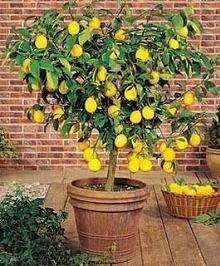By Teresa O’Connor
Citrus has a long and proud history in California. In 1895, the fruits helped make Riverside “the wealthiest city per capita in the nation,” as we explained in this article. By 1910, Los Angeles County was the nation’s largest producer of lemons, according to Rachel Surls, co-author of the new book From Cows to Concrete. Today, California’s citrus industry is valued at $3 billion annually and responsible for more than 26 thousand jobs.
What’s at Stake
It’s hard to imagine a future without oranges in California. But a little insect called Asian Citrus Psyllid (ACP) – which was accidentally introduced in 2008 into California – is posing the greatest economic threat that the state’s citrus industry has ever faced.
ACPs are vectors of a bacterium that causes a disease called huanglongbing(HLB), which also is called “citrus greening” because the fruit doesn’t fully turn orange (see photo). The lethal disease kills many types of citrus.
In Florida, the citrus industry has been dealing with the spread of HLB by ACP since 2005, and the disease is estimated to have cost producers in that state $1.6 billion in losses over a 5 year period, writes Dr. Erica Kistner of UC Riverside’s Center for Invasive Species Research.
Backyard gardeners are an important outreach target, according to University of California ANR entomologist Dr. Beth Grafton-Cardwell.
“We cannot stress strongly enough that landscape professionals, including residential and maintenance gardeners, can play a major role in minimizing the spread of this pest and HLB,” wrote Grafton-Cardwell on her blog, which provides lots of helpful advice on mitigating the disease.
Natural Predators Research
To fight this invasive citrus pest, UC Riverside entomologists and the California Department of Food and Agriculture (CDFA) have launched a classical biological control program to reduce ACPs in the state’s urban areas.
They have imported from Punjab, Pakistan two natural enemies of ACP, which attack different developmental stages of immature ACP (nymphs). With support from CDFA, USDA-APHIS and USDA -MAC, these two parasitoids have been released into California for biocontrol of ACP with promising initial results, according to Dr. Mark Hoddle, director of the Center for Invasive Species Research.
“The impact of this parasitoid and other predators has been significant,” explains Dr. Hoddle. “There have been declines of greater than 80 percent of ACP populations, which can be attributed to this natural enemy activity. This population of parasitoids from Punjab has a unique DNA fingerprint; therefore, we can ensure we are recovering from California field sites the parasitoids imported from Pakistan. These Pakistani natural enemies have been mass reared, released, established and recovered.”
Despite the biocontrol successes, there have been challenges. “The Argentine ant, another invasive pest, has developed a disruptive mutualism with ACP nymphs,” he says. “The nymphs provide honeydew, which is a sugar reward for the ants. In exchange, ants protect the ACP nymphs from their natural enemies. So, we’re working on new, novel ant control strategies. These might involve biodegradable baits loaded with ultra-low toxicity sugar water inside hydrogels made from crystallized algae.”



